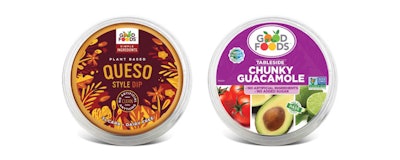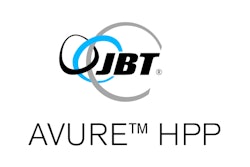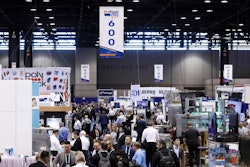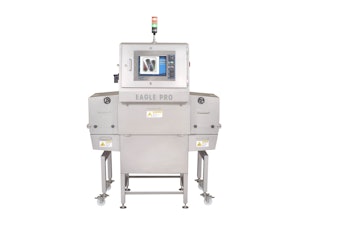As consumers continue to seek minimally processed foods and clean labels, products made with high pressure processing (HPP) are moving to the forefront. Savvy consumers know that minimally processed foods can provide the health benefits they desire. Food and beverages produced using HPP technology maintain enzymes, vitamins and other healthful aspects.
Jill Costelow, co-founder and co-CEO of Cultivate Group, owner and president of Charis Food & Beverage Consulting, and FSO Institute coach, believes this consumer trend will drive more product development for fresh food and beverages with no preservatives using HPP technology. Costelow has more than 25 years of experience managing large-scale manufacturing processes in the food and beverage industry and has extensive experience working for large companies, such as Nestlé, Coca-Cola and Frito-Lay, as well as smaller and startup companies, such as Pressed Juicery, POM Wonderful, California Natural Products and Odwalla.
Costelow is also well-versed in the fresh and pasteurized juice industry and was part of the original team that wrote FDA’s juice HACCP plan. In addition to being recognized as an authority on thermal process, Costelow is also a certified BRC auditor and has a background in food microbiology. She has an extensive thermal and nonthermal processing background from aseptic to HPP and holds three patents within the beverage industry. Costelow is also co-chair of the juice and beverage taskforce with the Institute for Food Safety and Health (IFSH), a food science research consortium comprised of the Illinois Institute of Technology, FDA and the food industry.
ProFood World: Is HPP considered true pasteurization?
Costelow: It is a pasteurization process, but it’s not true pasteurization. HPP inactivates vegetative bacteria yeast and molds. To what level depends on the time, pressure and water temperature or the media you are using, as it’s a high-pressure process. We do know HPP is resistant to bacterial spores. Because of that, it is not a true pasteurization. If you asked HPP tollers or equipment manufacturers, they would say it is used in lieu of pasteurization.
PFW: What products can benefit from HPP?
Costelow: Primarily, HPP has been done on high-acid products that have a low pH. The majority of work has been in fruits and vegetables in whole form, a puree or a liquid. We are seeing a lot more HPP being developed on pizzas, deli meats, some types of solid meats, cheese and breads. There’s a lot of work that still needs to be done on low-acid foods pertaining to low-acid products that have a high pH and are more subject to the bacterial spores. Consumers normally do not wash the fruits and vegetables they purchase in the precut aisle of the grocery store. There’s a lot of work being done on cross-contamination in the plant process — dicing, slicing and before it’s packaged — trying to protect that product for consumer consumption since it’s a cold process. The challenge is trying to figure out how to use technology to minimize foodborne outbreaks in that arena.
PFW: How is HPP validated and documented?
Costelow: Each product has to be run through a challenge study. Processors typically go to an HPP toll processor and describe the product they want to make. The toll processor will look historically at bacteria, yeast, mold and other criteria that needs to be eliminated from that type of product. They will recommend the process, and then test the product in the process to ensure it can hold up within HPP and meet the customer’s needs after the process.
Once that is confirmed, they will validate it with the target pertinent organism they want to ensure is eliminated in the process. The toller will inoculate the product with that organism, put it through the process again, and confirm the elimination. If the process wasn’t successful, there would still be detectable vegetative cells, bacteria and mold present, and that tells you the product is not a candidate for HPP.
PFW: How can food and beverage processors get started with HPP?
Costelow: They can either contact many of the key toll processors around the United States or work with equipment manufacturers, such as JBT/Avure Technologies or Hiperbaric, that have a network of toll processors that food manufacturers can contact. It’s really just understanding the customer’s products, what they’re trying to make, and what toll processors can achieve through that process. They’ll explain what they’re packaging can and can’t do and start the conversation.
PFW: Has anything changed recently regarding HPP toll processing?
Costelow: Probably the most change we’ve seen is the prevalence of food companies using it now. It doesn’t follow the traditional processing methods within FDA and USDA. It’s a fairly new technology for the regulatory teams, and they are struggling to ensure that the foods being produced are safe for the consumer without the benefit of having much background or historical data for the different food and beverages that are being produced today.
Another recent change is that FDA and USDA are now holding HPP toll processors accountable in addition to the manufacturers of the products to ensure that the food supply is safe for consumers.
PFW: What packaging forms are currently reliable for HPP usage?
Costelow: Currently, flexible packaging, such as pouches, and PET bottles, jars and containers are used. Anything that can flex can be used, so plastic packaging is successful. You need to make sure that the seal on the package container can hold up to or withstand the high-pressure levels that will be running. The only way to confirm that is to test it with your product in the process.
There is a lot of work being done on different flexible packaging shapes to try to meet consumer needs. There are traditional square and round trays, bowls, cups, but now you’re starting to see different shapes and how they perform during HPP because they don’t have straight sidewalls or round curves. Different shapes react differently under high pressure.
PFW: What types of new packaging forms are being explored?
Costelow: A lot of work is being done on bulk packaging. Where traditionally processors would use an aseptic 55-gal bag in drum or a 300-gal bag in drum, you’re starting to see HPP companies working with flexible packaging in larger bags and pouches to be used for ingredients and bulk items. HPP’s advantage is the elimination of using heat from a pasteurization standpoint and doing a cold pasteurization or process. Uncovering the opportunity for use in bulk ingredients will help expand HPP usage in food and beverage processing.
PFW: What are some of the challenges for HPP packaging?
Costelow: Probably the biggest challenges are the seals and the oxygen permeation of the packaging itself. When you put them into a HPP package, you must have enough rigidity for them to hold up to the high pressure, but also meet the needs of the product during its shelf life.
A lot of flexible packaging companies are working on how the criteria for products in HPP outweigh the development that’s currently happening in the packaging arena. They’re playing catch up, and there’s a lot of demand that they’re not able to meet yet.
The other piece of that challenge is all of the packaging thus far has been made for high-acid, low-pH products. As you get into low-acid, high-pH products, packaging has to be more secure and stable. That’s an area that’s just now starting to be explored.
PFW: What technology advances are HPP equipment suppliers currently trying to achieve?
Costelow: Traditionally, HPP has been a cold water or an ambient water process. From a pressure standpoint, equipment suppliers are playing with heat and trying to do a combination of a hot water and pressure process. With HPP, the hot water does not have to reach traditional high levels of 180 to 300°F, but tries to stay below that by using pressure to offset it and still get the same food safety or microbial kill.
The physical equipment was not designed for pressure at higher temperatures, so there’s a lot of strain and stress on the metal and on the equipment itself. Equipment suppliers are trying to use a combination of processes, hot water and pressure to achieve low-acid, high-pH kill steps while maintaining some of the healthful product benefits. The equipment was never designed for that. Now they’ve got to go back and research how they designed the original HPP equipment.


























